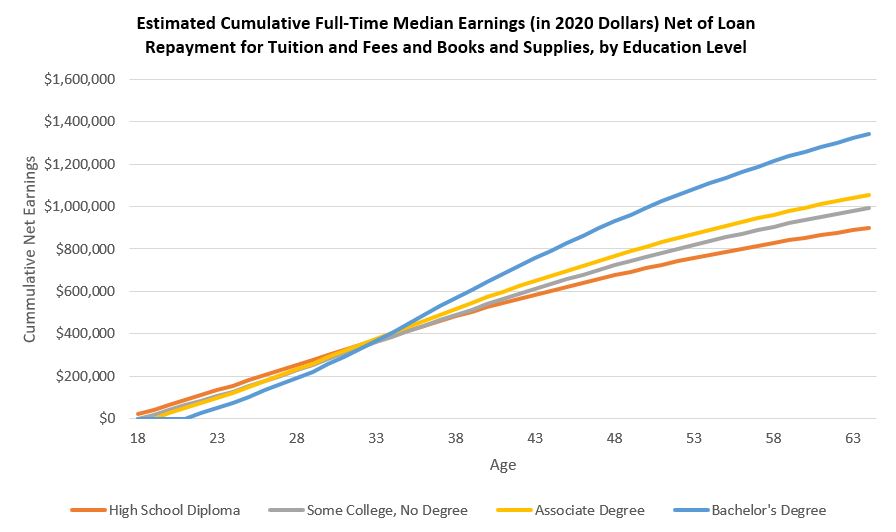Beyond Your Campus: Is College Worth It?
In a 2022 survey, high school graduates cited the cost of college as the primary reason for not enrolling, despite the fact the Trends in College Pricing 2023 report shows that average sticker tuition prices have declined or remained stable in the most recent three years, after adjusting for inflation. Furthermore, the average net prices that students pay after subtracting grant aid have remained flat in recent years, while average debt levels of bachelor’s degree recipients have been declining. College is still a worthwhile investment that pays off over time for the average student.
Earnings Premium Relative to Price of Education
- The typical four-year college student who enrolls at age 18 and graduates in four years can expect to earn enough relative to a high school graduate by age 34 to compensate for being out of the labor force for four years and for borrowing the cost of full tuition, fees, books, and supplies without any grant aid.
- For the typical student who attends a public college for a year and leaves without a degree, total earnings exceed those of high school graduates by age 36.
- The longer college graduates remain in the workforce, the greater the payoff for their investment in higher education.
|
Note: This analysis excludes bachelor’s degree recipients who earn advanced degrees. We assume that students borrow for the cost of tuition, fees, books, and supplies and pay it off over 10 years after graduation with a 4.99% annual interest rate during and after college. Tuition/loan payments and earnings are discounted at 3%, compounded every year beyond age 18. The 2023-24 price is projected using the 2022-23 price and a 3% annual increase. Source: U.S. Census Bureau, American Community Survey, 2016-2020 Five-Year Public Use Microdata Sample; College Board, Trends in College Pricing and Student Aid 2022; calculations by the authors. |
